Showing 13–22 of 22 results

History of Jainism has been divided into three parts Jain history and its origin; its historic importance; and Jain religion during the interim periods all covered in detail. Jainism during Mogul rule its Social and Economic condition, has also been described.
History of Jainism has been presented here in three parts. The first part tries to prove through the archaeological and literary sources the historicity of Tirthamkara, Parsvanatha and Mahavira, explaining their life and education besides religious, political, social, artistic and literary conditions of their times. The second part surveys the history of the Jaina dharma, its expansion and significance. The effects of Jaina dharma increased when Mauryas were ruling Magadha and Kharawelas ruled Orissa. No doubt, the period from the 9th to 12th centuries ce was a golden time in the history of Jainism and even traders, labourers and craftsmen were highly influenced by it during Kusana period. Seen geographically, Cauhana, Paramara and Calukya were acting as watchmen for Jainism in the north and in the south it was being nourished by Calukya, Rastrakuta and Ganga (Kingdoms). Many Jaina temples were constructed, monuments erected in honour of their deities. This part illustrates the many ways in which Jainism was served by the Jaina monks, saints, scholars and the politicians and answers questions such as: What kind of religious and social unions were made after the division and what were their traditional characteristics? How were the different leagues and monastries of Jaina sages made? What was the lineage of various castes and how they originated? The third part, associated with the middle ages of Jainism, describes that even though there was Muslim rule, still many organizations were sponsored with the influence of Jainism. Truthfully, there was a decline in Jainism during the middle ages but it remained protected. Many pilgrimages and historical places were established with the great influence of Jainism. Dr A.H. Nizami has written here about the Muslim reign, conditions of Jainism and also about the admirable Jainas. Dr Surendra Gopal has described the social and financial conditions prevailing at this period. Dr Shyam Sunder Nigam has penned on the middle ages of India and Dr Prakash Chandra Jain has written about the Jaina religion in the Middle Ages in Malwa region. This monumental work will be a treat for the minds and eyes of people curious about Jainism.

History of Jainism has been divided into three parts Jain history and its origin; its historic importance; and Jain religion during the interim periods all covered in detail. Jainism during Mogul rule its Social and Economic condition, has also been described.
History of Jainism has been presented here in three parts. The first part tries to prove through the archaeological and literary sources the historicity of Tirthamkara, Parsvanatha and Mahavira, explaining their life and education besides religious, political, social, artistic and literary conditions of their times. The second part surveys the history of the Jaina dharma, its expansion and significance. The effects of Jaina dharma increased when Mauryas were ruling Magadha and Kharawelas ruled Orissa. No doubt, the period from the 9th to 12th centuries ce was a golden time in the history of Jainism and even traders, labourers and craftsmen were highly influenced by it during Kusana period. Seen geographically, Cauhana, Paramara and Calukya were acting as watchmen for Jainism in the north and in the south it was being nourished by Calukya, Rastrakuta and Ganga (Kingdoms). Many Jaina temples were constructed, monuments erected in honour of their deities. This part illustrates the many ways in which Jainism was served by the Jaina monks, saints, scholars and the politicians and answers questions such as: What kind of religious and social unions were made after the division and what were their traditional characteristics? How were the different leagues and monastries of Jaina sages made? What was the lineage of various castes and how they originated? The third part, associated with the middle ages of Jainism, describes that even though there was Muslim rule, still many organizations were sponsored with the influence of Jainism. Truthfully, there was a decline in Jainism during the middle ages but it remained protected. Many pilgrimages and historical places were established with the great influence of Jainism. Dr A.H. Nizami has written here about the Muslim reign, conditions of Jainism and also about the admirable Jainas. Dr Surendra Gopal has described the social and financial conditions prevailing at this period. Dr Shyam Sunder Nigam has penned on the middle ages of India and Dr Prakash Chandra Jain has written about the Jaina religion in the Middle Ages in Malwa region. This monumental work will be a treat for the minds and eyes of people curious about Jainism.

History of Jainism has been divided into three parts Jain history and its origin; its historic importance; and Jain religion during the interim periods all covered in detail. Jainism during Mogul rule its Social and Economic condition, has also been described.
History of Jainism has been presented here in three parts. The first part tries to prove through the archaeological and literary sources the historicity of Tirthamkara, Parsvanatha and Mahavira, explaining their life and education besides religious, political, social, artistic and literary conditions of their times. The second part surveys the history of the Jaina dharma, its expansion and significance. The effects of Jaina dharma increased when Mauryas were ruling Magadha and Kharawelas ruled Orissa. No doubt, the period from the 9th to 12th centuries ce was a golden time in the history of Jainism and even traders, labourers and craftsmen were highly influenced by it during Kusana period. Seen geographically, Cauhana, Paramara and Calukya were acting as watchmen for Jainism in the north and in the south it was being nourished by Calukya, Rastrakuta and Ganga (Kingdoms). Many Jaina temples were constructed, monuments erected in honour of their deities. This part illustrates the many ways in which Jainism was served by the Jaina monks, saints, scholars and the politicians and answers questions such as: What kind of religious and social unions were made after the division and what were their traditional characteristics? How were the different leagues and monastries of Jaina sages made? What was the lineage of various castes and how they originated? The third part, associated with the middle ages of Jainism, describes that even though there was Muslim rule, still many organizations were sponsored with the influence of Jainism. Truthfully, there was a decline in Jainism during the middle ages but it remained protected. Many pilgrimages and historical places were established with the great influence of Jainism. Dr A.H. Nizami has written here about the Muslim reign, conditions of Jainism and also about the admirable Jainas. Dr Surendra Gopal has described the social and financial conditions prevailing at this period. Dr Shyam Sunder Nigam has penned on the middle ages of India and Dr Prakash Chandra Jain has written about the Jaina religion in the Middle Ages in Malwa region. This monumental work will be a treat for the minds and eyes of people curious about Jainism.
Ancient history of India reveals that there were two parallel traditions in India, viz. Vedic and Sramanic. The Sramana Tradition includes Jainism, Buddhism and others such as the Ajivikas and Ajtianas. Jain religious tradition is one of the oldest living religions of India. Historicity of 24th Tirthankara Mahavira in sixth century BCE is well established. The Jain records mention the name of 23 tirthankaras before Mahavira. Among them Parsvanatha was the 23rd and Neminatha was the 22nd.
Parsvanatha is now acknowledged as a historical figure by a number of scholars. The existence of Parsva’s Order in Mahavira’s time is recorded as a discussion between the followers of Parsva (caturyama) and those of Mahavira (pancayama) in the Uttara-adhyayanasiitra. Keeping this fact in mind, International School for Jain Studies (ISJS) in association with the Bhandarkar Oriental Research Institute (BORT) organized a two-day International Seminar on “Traces of Sramana Tradition (with special reference to Jainism): Prior to 650 BCE” on 5-6 October 2019 in Pune. This book contains 13 selected papers presented in this seminar exploring the available archaeological, cultural, social and literary evidences to substantiate the existence of Jain tradition before 650 BCE.

This study, typed afresh, based on the original study of Jaina sources, involving criticisms, establishes Jainism as the most powerful religion of the north. It discusses the life of Mahavira, his Jaina religious philosophy and traces the influence of Jainism on royal dynasties and clans between 800 and 200 bc.
This book concentrates on the origin of Jainism in north India and its evolution during 800 bc to ce 526 when, not yet crystallised into a set structure and codified into religious books, it retained a genuineness. This reprinted volume is now offered in a fresh state-of-the-art typeset. The photographs are improved versions of the earlier ones with more lustre and colour. Based on the original study of Jaina sources and involving criticism of various opinions, the study establishes Jainism as the most powerful religion of the north from the days of Parsva (800 bc) to the Kusana and the Gupta periods and even the Vallabhi kings. It begins with Jainism’s antiquity with reference to Parsva’s historicity and scrutinises references to Jainism in Hindu and Buddhist literature. It discusses the life of Mahavira and the Jaina religious philosophy that developed under him and later it traces the influence of Jainism on royal dynasties and clans that held sway from 800 to 200 bc. It views the arrival and growth of Jainism in Kalinga region by studying numerous evidences in caves, temples and inscriptions. It specially reviews Jaina literature and art in north India. A detailed perspective is offered of crucial aspects like the date of Mahavira’s nirvana by consulting a host of Jaina religious literature and modern scholarly studies. The volume will benefit scholars and students of Indology, and of Indian religions in particular.
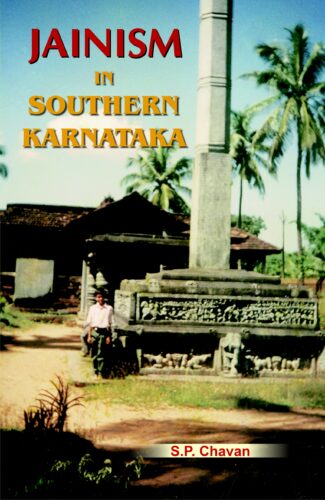
An account of development of Janism in southern Karnataka, by examining inscriptions, historical monuments and literary works of the time. It discusses the physiography and formation of modern Karnataka, to under stand the spread of Jainism as a religion and philosophy and its influence on the social and political life of the people.
The book is on the development of Jainism in southern Karnataka from the time of its emergence in the region after the fourth century ad to ad 1565. Examining numerous inscriptions and literary works of the time, studying Jain historical monuments, it reconstructs the stages of development of Jainism concentrating on the rise and development of centres of Jainism like Sravanbelagola and Humcha which became the capital of Santara dynasty and a sacred place associated with Goddess Padmavati, and Jain centres in South Kanara district like Karkala, Moodabidri and Venur. It examines the contributions of Bhattarakas, religious rulers who were also erudite Jain scholars who protected the Jain sacred literature and promoted the course of Jainism in the region generally from the eighth century onwards. It also includes a discussion of physiography and formation of modern Karnataka to understand the way the Jain centres played a vital role in the spread of Jainism. It presents a detailed account of Jainism as a religion and philosophy, the message of Mahavira and the cardinal principles of Jainism, role of tirthankaras in Jainism, and founding of Jainism by rulers in north India. Referring to erection of Jain temples and installation of Jain sculptures, it deals with the contributions of Jain religious scholars to development of Jainism and the influence of Jainism on social and political life of the people.
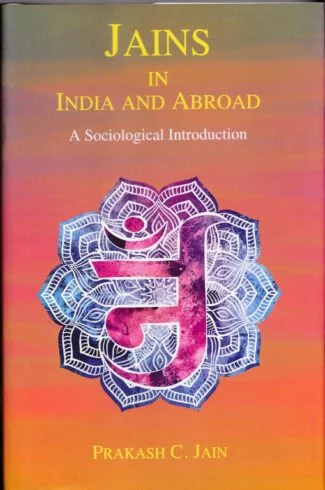
This book profiles the salient demographic, religious and sociological features of the Jain communities in India and abroad, be it their way of life, social identity, organizational features such as sects, castes, kinship, family and marriage, food, festivals and pilgrimage, Jain associations, or the status of contemporary Jain women along with their inter-ethnic relations, and the Jains’ historical and civilizational contribution to Indian culture.
Jainism, one of the oldest religions of the world, found its philosophy, rituals and ethical code in the teachings of Lord Mahavira, the twenty-fourth tirthankara of Jainism. Though its reach was confined only to the Indian subcontinent for more than two-and-a-half millennia, from the twentieth century onwards, it made its presence felt across the globe, mainly in the US, the UK, Europe, East Africa and Nepal, and in smaller numbers in many other parts of the world, through its diasporic population. This book thus profiles the salient demographic as well as sociological features of the Jain communities in India and abroad.
The Jains have been a minority community consisting of less than 1 per cent of Indian population in modern times. The current population of the Jains is estimated around six million. Its diasporic communities consist of about 300,000. Despite its miniscule size, the community’s contributions to the Indian society in different realms are quite commendable, be it education, trade and commerce, politics or in running and efficiently managing charitable institutions. Other demographic features include its high literacy rate, lowest infant mortality rate and appreciable sex ratio (954 in 2011). Their approach and attitude towards all living beings stand tall among all religious communities of the world.
The book further features other socio-religious aspects of the Jain community along with its way of life, social identity, organizational features such as sects, castes, kinship, family and marriage, food, festivals and pilgrimage, Jain associations, and status of contemporary Jain women. The economic and political status of the Jains, their inter-ethnic relations, and the Jains’ historical and civilizational contribution to Indian culture and society are also vividly addressed. It navigates scholars and researchers to a wide range of areas in Jain studies for further researches.
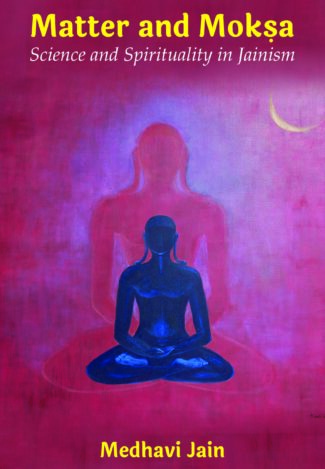
The book deals with the leading theory and practices of Jainism, putting much focus on ethics, thereby to the theory of karma, it also delves upon with the theory of yoga philosophy of non-absolutism, and the concept of time, space, metaphysics, etc.
“In Matter and Mokṣa, matter indicates the subject of science, whereas mokṣa refers to the peak of spirituality, as described by the Indian thinkers of Jaina philosophy. Interestingly, science and spirituality have always been intertwined subjects for Indian scholars. Where one is incomplete without the other, as the spiritual self is the only one who embarks on the journey to be a scientist. The book starts with the leading theory and practices in Jainism by throwing light upon the importance of ethics in one’s life. In Indian culture, ethics are directly linked with the actions one performs; hence covers the theory of karma. Then comes the importance of knowledge in improvising one’s reactions to lead a peaceful and non-violent life. Moving ahead comes yoga, which holds a very high significance in all Indian traditions and according to Jaina philosophy, it is an inseparable part of a being’s life. It further talks about the basics of the theory of non-absolutism as described by the 24th and the last Ford maker Mahāvīra.
The book throws light upon the concept of space, time, cosmography and metaphysics. It also covers the spiritual aspect by explaining the concepts of soul, mind and body, the importance of meditation, nine categories of truth, the concept of God and then the final destination, the ultimate purpose of existence mokṣa as explained in Jainism.”
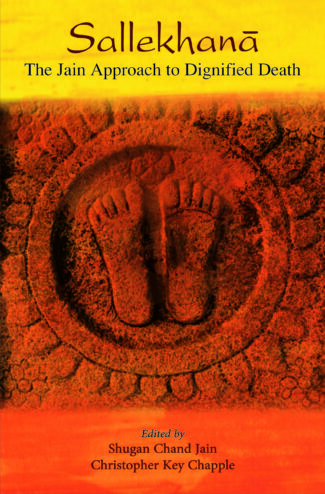
Jainism regards life to be eternal. Recognizing that the soul can never die, but merely takes a new body, a careful tradition welcoming death through intentional fasting developed more than two thousand years ago. A legal challenge Rajasthan was put forward in 2013, suggesting that this practice is harmful and coercive and targets women in particular. For a short while SallekhanÀ, which means the thinning of existence, was declared illegal. In response to this controversy, three conferences were convened by the International School for Jain Studies to explore the legal, religious, and medical aspects of this practice. Experts discussed the long history of the practice, attested to in epigraphs throughout India; the ways in which fasting to death has become an acceptable practice in the Western world; and contemporary instances of its observance in India. This volume presents an interdisciplinary approach to thinking about the end of life, from biomedical, historical, religious, and legal perspectives.
Jainism regards life to be eternal. Recognizing that the soul can never die, but merely takes a new body, a careful tradition welcoming death through intentional fasting developed more than two thousand years ago. A legal challenge Rajasthan was put forward in 2013, suggesting that this practice is harmful and coercive and targets women in particular. For a short while Sallekhanā, which means the “thinning of existence,” was declared illegal. In response to this controversy, three conferences were convened by the International School for Jain Studies to explore the legal, religious, and medical aspects of this practice. Experts discussed the long history of the practice, attested to in epigraphs throughout India; the ways in which fasting to death has become an acceptable practice in the Western world; and contemporary instances of its observance in India. This volume presents an interdisciplinary approach to thinking about the end of life, from biomedical, historical, religious, and legal perspectives.
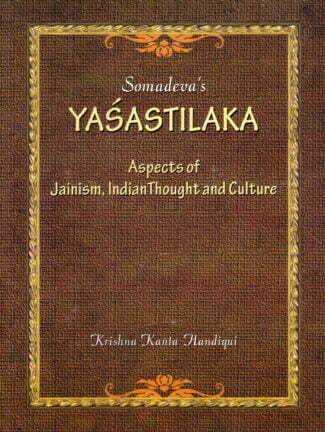
This book is notable as an encyclopaedic record of literary, socio-political, religious and philosophical data that throws light on the cultural history of the Deccan in early medieval India. It discusses Somadeva, his age and gives a synopsis of Yashastilaka, throws light on Jaina dogmatics, religious poetry, moral and religious stories and myths and legends.
Yashastilaka by Somadeva, composed in ce 959, is a Jaina religious romance written in Sanskrit prose and verse. It is notable as an encyclopaedic record of literary, socio-political, religious and philosophical data that throws light on the cultural history of the Deccan in early medieval India. This volume presents a critical study of the work, providing a comprehensive picture of the life and thought of the time of Somadeva. It begins with a discussion on Somadeva and his age and gives a synopsis of Yashastilaka. it examines the Yashastilaka as a prose and a religious romance, a socio-political record and as an anthology of Sanskrit verse. The book discusses various philosophical doctrines in Indian thought. With many detailed references and footnotes, it reveals the Yashastilaka as a work that expounds the cardinal teachings of Jainism. It throws light on Jaina dogmatics, religious poetry, moral and religious stories, and myths and legends in the process of examining the work. The volume also has supplementary notes incorporating the results of studies on Somadevas relations with the Vemulavada Calukyas and the locality in which he wrote his masterpiece.
| There are no products |